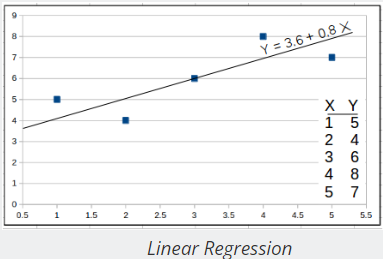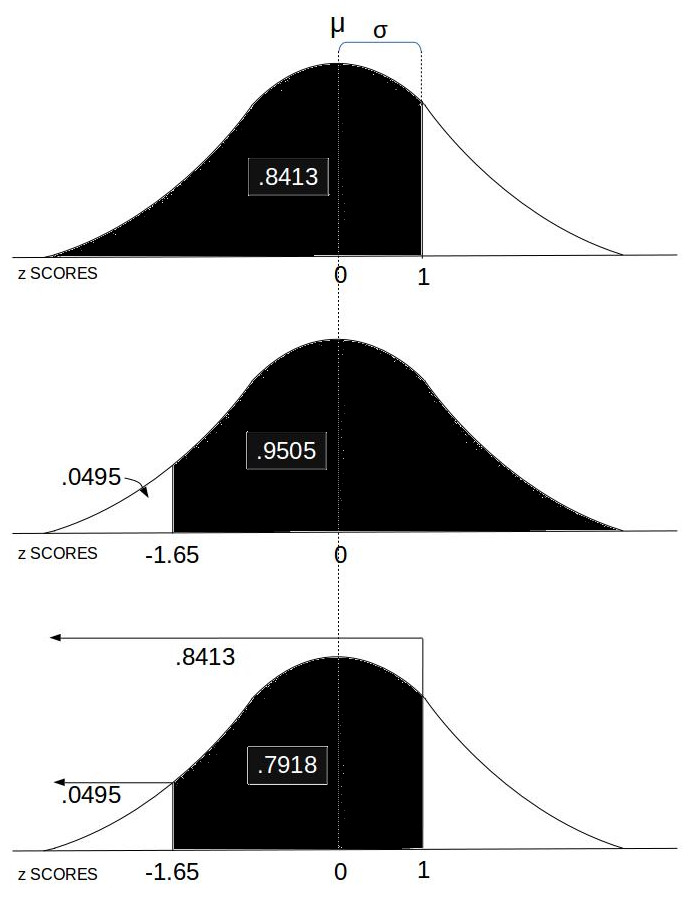One Way ANOVA
Tags | |
UUID | 00f123c8-da85-11eb-8eb2-bc764e203090 |
The One-Way Analysis of Variance (ANOVA) calculator computes the ANOVA F score and degrees of freedom for a number of groups.
INSTRUCTIONS: Enter the following in comma separated lists:
- (OB) Observation Table of Groups
- (OC) Output Choice (F-Score or Details)
ANOVA F-Score: The calculator returns the F-score and degrees of freedom for the null hypothesis. Note: there has to be an equal number of observations in all groups. The calculator also returns the following support statistics:
- F Score
- Numerator: degrees of freedom Between:
- Denominator: degrees of freedom Within:
- Details
- Mean of Groups
- Grand Mean of All Groups Combined
- Sum of Squares (total)
- Sum of Squares (Within)
- Sum of Squares (Between)
- Variance Between
- Variance Within
Example
A school administrator want to know if the time / day of taking tests significantly affect test scores. Let's consider four groups of students taking pop quizzes. Group 1 only gets tested on Mondays first period. Group 2 only gets tested Wednesday after lunch. Group 3 only gets tested in the last period on Fridays, and Group 4 on random days and times. The quiz has 12 questions with a range of potential scores from 0 to 12.
| Group 1 | Group2 | Group3 | Group 4 |
|---|---|---|---|
| 11 | 7 | 6 | 5 |
| 9 | 9 | 5 | 3 |
| 10 | 8 | 7 | 4 |
The above data would be entered into this calculator as follows:
11,7,6,5
9,9,5,3
10,8,7,4
How many degrees of freedom(DF) do you see?
What is the F-Score?
Based on that, compare it to the chosen alpha level (see below) and determine if you accept or reject the hypothesis.
The Math / Science
In ANALYSIS of VARIANCE (ANOVA), the formula for the sample variance is:
`s^2 = (sum y^2 - (sumy)^2/n)/(n-1)`
DF Among = a - 1
DF Within = a(n-1)
Total DF = n-1
F - Tables
Alpha = 0.1
Alpha = 0.05
Statistics Calculators
- Observational Stats: This function accepts a table (rows and columns separated by commas) of numbers and calculates observational statistics for any of the columns. This includes count, min, max, sum, sum of squares (Σx²), square of the sum (Σx)², mean, median, mode, range, mid point, rand, sort up, sort down, rand, population variance, population standard deviation, the sample/experimental variance, sample/experimental standard deviation.
- Simple Stats: This is also provides a full set of observational stats, but on a single row of numbers separated by commas. The observational stats include count, min, max, sum, sum of squares (Σx²), square of the sum (Σx)², mean, median, mode, range, mid point, rand, sort up, sort down, rand, population variance, population standard deviation, the sample/experimental variance, sample/experimental standard deviation.
- Frequency Distribution: This function lets you enter a string of numbers separated by commas, a low and high range and a number of bins. It then computes how many of the observations are in each of the bins between the high and low values designated.
- Paired Sample t-test: This computes the various parameters associated with the Paired Sample t-test.
- ANOVA (one way): The computes the F Score and details for one way analysis of variance for a nxm matrix of observations.
- (χ2) Chi-Square Test: This computes the Chi-Square value for an nxm array of data and provides the degrees of freedom.
- Linear Regression
 : This computes the regression line (least-squares) through a set of X and Y observations. It also computes the regression coefficient (r).
: This computes the regression line (least-squares) through a set of X and Y observations. It also computes the regression coefficient (r). - Least-squares Trend Inference : This is a linear equation used with Linear Regression to compute a predicted value of Y based on X.
- Wilcoxon Signed Rank Test: This provides the Wilcoxon statistics and critical value for two groups of numeric observations based on an alpha value and whether it's a one or two tailed test.
- Slope-Intercept form of a Line: This provides the slope intercept form (y = mx+b) of a line based on two coordinates.
- Slope between two points: This provides the slope between two coordinates.
- Linear Equation: This computes the range (y) of a linear equation (y = mx +b) and includes a graphing function.
- Probability between z SCORES:
 This computes the area under the Normal Distribution curve between two z SCOREs which equates to the probability of an event in that range.
This computes the area under the Normal Distribution curve between two z SCOREs which equates to the probability of an event in that range. - Stats Calc: College level statistics calculator with a bundle including most of the functions in this list.
- Count: This computes the number (n) of observations in a set of numbers.
- Minimum: This computes the minimum (min) value in a set of numbers.
- Maximum: This computes the maximum (max) value in a set of numbers.
- Numeric Sort: This sorts (ascending or descending) a set of comma separated numerical observations.
- Random Sample (k items): The provides a random subset of a specified size (k) in a set of comma separated numerical observations.
- Random Real Number in Range: The provides a random real number between two specified real numbers (upper and lower bounds).
- Radom Integer: The provides a random integer between two specified integers (upper and lower bounds).
- Frequency Distribution: This provides a frequency distribution table for a comma separated set of numbers with a specified number of frequency bins between a lower and upper data range.
- Sum (Σx): This is computes the sum of the values in a set.
- Sum of Squares (Σx²): This computes the sum of the squared values in a set.
- Sum Squared (Σx)²: This computes the square of the summed values in a set.
- Mean (μ): This computes is the mean (average) of values in a set.
- Median: This identifies the middle ordered value in a set of numbers.
- Statistical Mode: This identifies the most recurring observation in a set of numbers.
- Mid Point: This is identifies the mid point of the observation range in a set of numbers.
- Range: This is computes the difference between the max and the min values in a set of number.
- Population Variance (σ2): This computes the variance, a metric regarding the spread of values, for a population set of numeric values.
- Population Standard Deviation (σ): This computes the standard deviation for a population set of numeric values.
- Sample Variance (s2) : This computes the variance, a metric regarding the spread of values, for a sample set of numeric values within a greater population.
- Sample Standard Deviation (s): This computes the standard deviation for a sample set of numeric values within a greater population.
- z SCORE Formula: This computes the z SCORE for a value base on the mean and standard deviation.
- z SCORE: This computes the z SCORE for a value (Raw Score) based on a set of values, and whether that set is sample or population.
- Percentile: This computes the percentile of a value (y) in a set (X) of values.
- Standard Deviation of Mean (SDOM): This computes the standard deviation of mean, sometimes also known as the standard error of the mean (SEM), useful to helps quantify the uncertainty in the estimate of the mean.
- Percent Relative Standard Deviation (%RSD): This computes the percent relative standard deviation, also known as the coefficient of variation (CV). The %RSD is a measure of the dispersion of a probability distribution.
Community Statistics Calculators
- Sorensen Coefficient
- Jaccard Index
- Jaccard Index (simple)
- Simple Matching Coefficient
- One Way Analysis of Variance (ANOVA)
- Simple Statistics Calculator
- Sort a list of numeric values
- Create a random subset of the a list of numeric values
- Frequency distribution of data.
- Chi-Square Calculator
References
- One Way ANOVA video: https://youtu.be/q48uKU_KWas
Calculators
Collections
- Comments
- Attachments
- Stats
No comments |

